THE PHILIPPINES
 Thursday, September 2, 2021 at 1:16PM
Thursday, September 2, 2021 at 1:16PM
September has been declared Philippine Film Industry Month 2021 in a celebration initiated by The Philippine Film Archive and the Film Development Council of The Philippines. To celebrate the 100-year history of cinema-going and filmmaking in the island nation, SCREEN-SPACE casts an eye over the history* of the Filipino film sector...
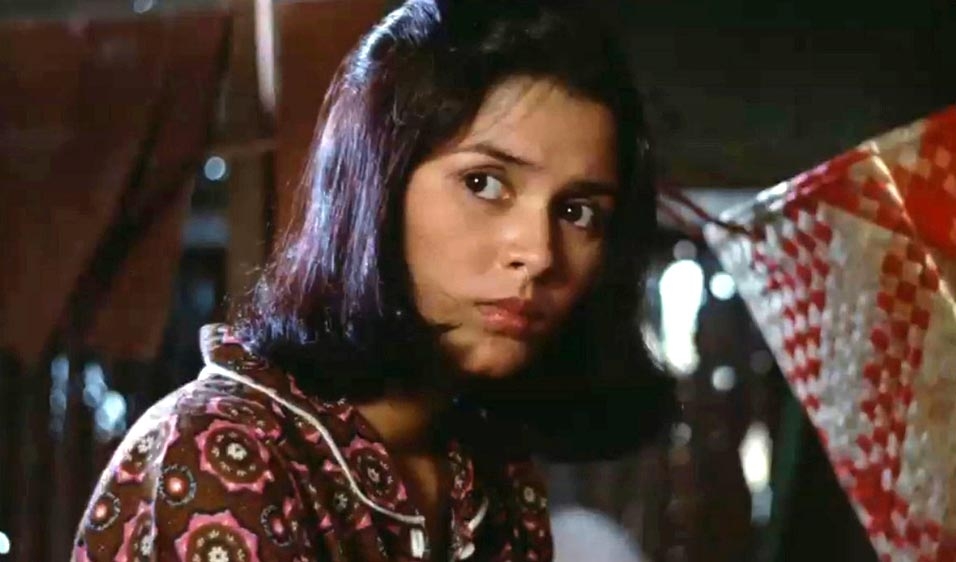
Under Spanish rule, European entrepreneurs introduced the new ‘Moving Image’ artform to the people of The Philippines. A pair of Swiss travellers screened documentary clips of European current events in Manila as early as 1897. But it was the exchange of the nation’s governance to the United States in 1898, that truly launched the new technology known as ‘cine’ to the island nation.
Audiences at Manila movie houses, such as Cinematografo, Cine Walgrah, Cinematografo Rizal and Gran Cinematografo Parisien would sit enthralled by a steady stream of newsreel and short silent films, making cinema-going one of Manila’s favourite pastimes.
Competition to be the first Filipino movie was fierce as the potential for profit was large. The first to start shooting was La Vida de Rizal, a large-scale epic about the revered Philippine national hero Jose Rizal. When word spread about the production, a cheaper version named La Pasion Y Muerte de Dr. Rizal was hurried before the cameras. Both premiered on August 24, 1913 to rousing business, though much publicity was generated of the feud between the two production outfits.
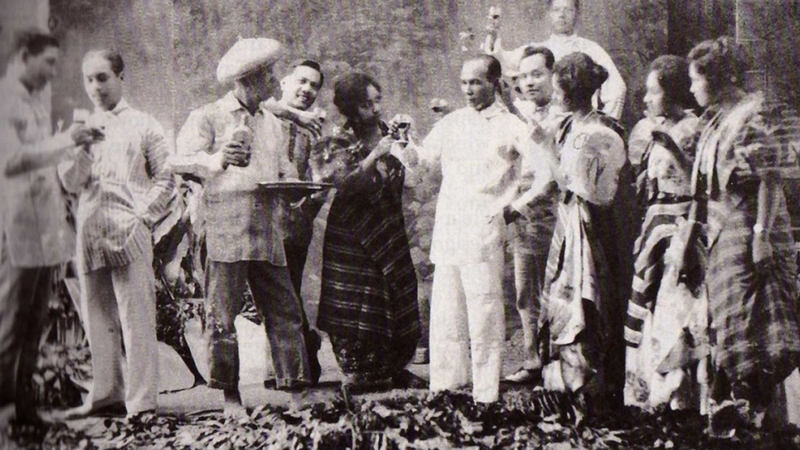 The steady flow of newsreels and short features inspired a young man named Jose Nepomuceno, and led to one of the most influential careers in the history of Philippine cinema. After forming the production company Malayan Movies, Nepomuceno made the first full-length Filipino film Dalagang Bukid in 1919 (pictured, right). He would also contribute immeasurably to the chronicling of Philippine history, as a regional newsreel representative for Paramount News and Pathe.
The steady flow of newsreels and short features inspired a young man named Jose Nepomuceno, and led to one of the most influential careers in the history of Philippine cinema. After forming the production company Malayan Movies, Nepomuceno made the first full-length Filipino film Dalagang Bukid in 1919 (pictured, right). He would also contribute immeasurably to the chronicling of Philippine history, as a regional newsreel representative for Paramount News and Pathe.
Along with his contemporaries Vicente Salumbides, Carmen Concha and Julian Manansala, Nepomuceno would mentor local talent via extensive workshopping in his many production companies. He is regarded as the ‘Grandfather of Philippino Cinema’, having produced such landmark films as La Venganza de Don Silvestre (1920), La Mariposa Negra (1920), El Capullo Marchito (1921), Hoy o Nunca, Besame (1923) and the film many regard as the country’s greatest work, Noli Me Tangere (1930). He would also produce one of the first local sound pictures, Punyal na Ginto (1932). The first Filipino movie to achieve international recognition was Zamboanga (1937), starring Fernando Poe and Rosa del Rosario.
The Japanese occupation of The Philippines had a devastating effect on local film production. Stories reflecting nationalistic themes, especially the comedies which celebrated the population’s naturally optimistic view of life, were replaced by Japanese propaganda pictures that were forcibly produced by Manila’s production community. Only two films that embraced their Filipino heritage, Gerardo de Leon’s Tatlong Maria and Abe Yutaka’s Dawn of Freedom, were produced under Japanese rule, though both were heavily censored.
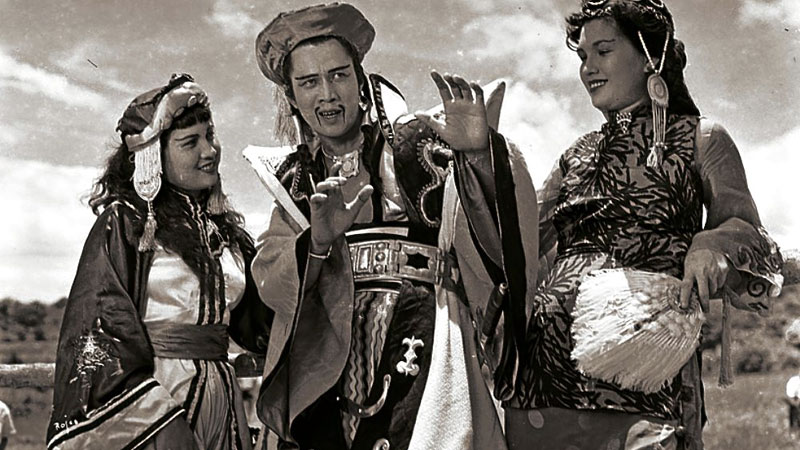 Post-war Philippine cinema is marked by films that celebrated the heroics of war and were influenced by the gung-ho militarism of the American troops, who were overseeing the reconstruction of the devastated city of Manila. At the forefront of this rejuvenating period for local film production were the directors Manuel Conde (Orasang Ginto, 1945; Genghis Khan, 1950, pictured, right), Octavio Silos (Ulila ng Watawat, 1946), Manuel Silos (Victory Joe, 1946), Dr. Gregorio Fernandez (Garrison 13, 1946), The Nolasco Brothers (Fort Santiago, 1946), Lamberto Avellana (Death March, 1946), Oscar del Rosario (Multo ni Yamashita, 1947), and Carlos Vander Tolosa (Krus ng Digma, 1947).
Post-war Philippine cinema is marked by films that celebrated the heroics of war and were influenced by the gung-ho militarism of the American troops, who were overseeing the reconstruction of the devastated city of Manila. At the forefront of this rejuvenating period for local film production were the directors Manuel Conde (Orasang Ginto, 1945; Genghis Khan, 1950, pictured, right), Octavio Silos (Ulila ng Watawat, 1946), Manuel Silos (Victory Joe, 1946), Dr. Gregorio Fernandez (Garrison 13, 1946), The Nolasco Brothers (Fort Santiago, 1946), Lamberto Avellana (Death March, 1946), Oscar del Rosario (Multo ni Yamashita, 1947), and Carlos Vander Tolosa (Krus ng Digma, 1947).
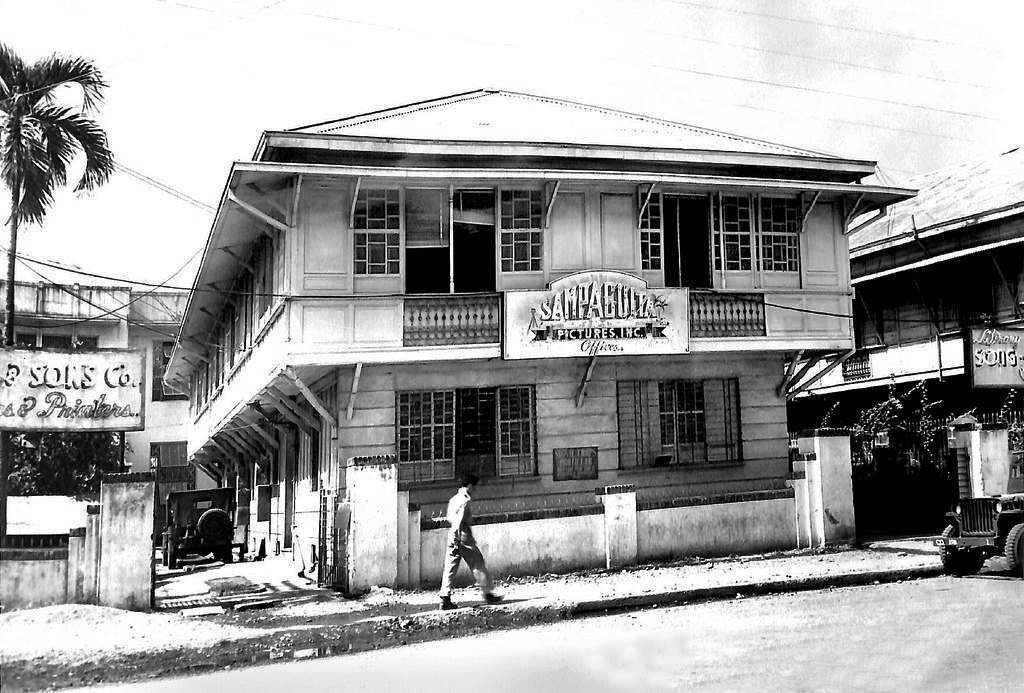 This boom in production and the advancements in technology that were impacting global cinema led to what is regarded as the Golden Era of Philippine cinema. A genre known as ‘komiks’ – adventure films adapted from the serialized novels of the day – became phenomenally successful. Films based on komiks with titles such as Hagibis, Sawa sa Lumang Simboryo, Salabusab, Malvarosa, Darna, Roberta, Darna at Ang Babaing Lawin, Dyesebel, Bondying and Kenkoy were just a few of the blockbusters of the period.
This boom in production and the advancements in technology that were impacting global cinema led to what is regarded as the Golden Era of Philippine cinema. A genre known as ‘komiks’ – adventure films adapted from the serialized novels of the day – became phenomenally successful. Films based on komiks with titles such as Hagibis, Sawa sa Lumang Simboryo, Salabusab, Malvarosa, Darna, Roberta, Darna at Ang Babaing Lawin, Dyesebel, Bondying and Kenkoy were just a few of the blockbusters of the period.
The four newly-established Manila based studios - Sampaguita (pictured, above; in 1945), LVN, Premiere and Lebran - experienced a boom period like the industry had never seen thanks to ‘komiks’, as well as the imported genre films from Europe and the US, which would be dubbed locally. The first full-colour feature was produced in 1951 – the komik adaptation Prinsipe Amante, which is regarded as one of the very first and finest Asian colour films.
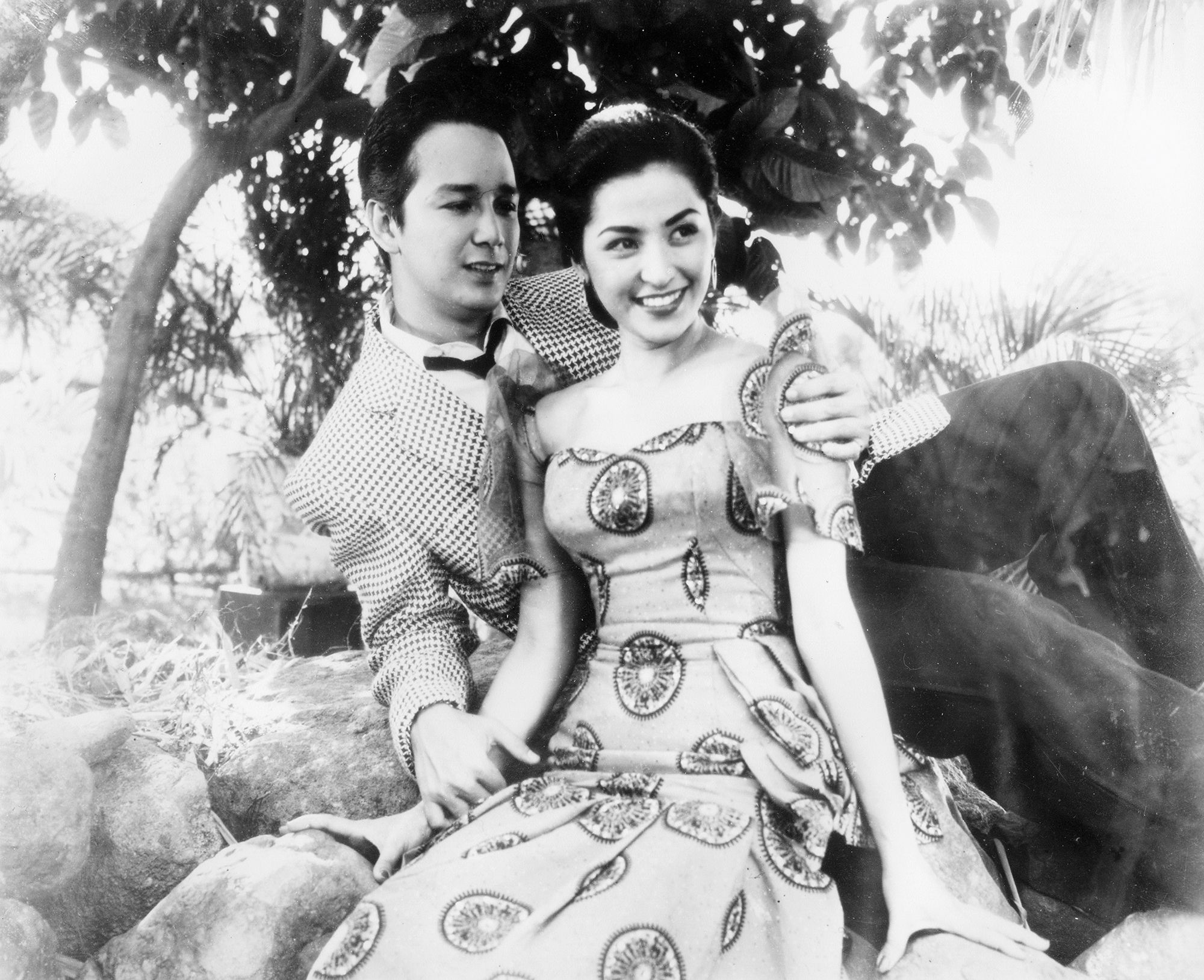 Teen romance and rock’n’roll romps were popular; films featuring the pairings of such lovebirds as ‘Tita and Pancho’ and ‘Nida and Nestor’ (pictured, right) served the rebellious teenage spirit of the decade. Also commercially potent were the ‘child star’ films, making household names of Tessie Agana (the blockbuster hit, Roberta, 1951); Mila Nimfa (Basag na Manika, 1951); Helen Grace Prospero (Rita Rits, 1952); and, Manuel Ubaldo (Ang Magpapawid, 1950; Anak Ko!, 1951; Kamay ni Hugo, 1952).
Teen romance and rock’n’roll romps were popular; films featuring the pairings of such lovebirds as ‘Tita and Pancho’ and ‘Nida and Nestor’ (pictured, right) served the rebellious teenage spirit of the decade. Also commercially potent were the ‘child star’ films, making household names of Tessie Agana (the blockbuster hit, Roberta, 1951); Mila Nimfa (Basag na Manika, 1951); Helen Grace Prospero (Rita Rits, 1952); and, Manuel Ubaldo (Ang Magpapawid, 1950; Anak Ko!, 1951; Kamay ni Hugo, 1952).
Fees and public dissatisfaction with increasingly lowbrow content saw the film industry buckle in the 1960s. Director Gerardo de Leon was determined to make artistically noteworthy films - Huwag mo Akong Limutin (1960); Kadenang Putik (1960); Noli Me Tangere (1961); and, El Filibusterismo (1962). But commercial western cinema imports were booming in The Philippines, and local producers tried to match their appeal with such curiosities as Filipino samurai, kung fu masters and Filipino ‘James Bonds’. The horror and fantasy genres helped bolster the local sector from this point forward, with productions like Eddie Romero’s Brides of Blood (1968), the first of several splatter-pics featuring US import John Ashley, finding broad audience favour.
The most potent box-office juggernaut of the period was ‘The Bomba Film’, a movement that began the re-establishment of domestic cinema in earnest. The Bomba film, led by filmmakers such as Lino Brocka (Stardoom, 1971), Ishmael Bernal (Pagdating Sa Dulo, 1971) and Mike de Leon (Kisapmata, 1981), was one that reacted against society’s mores and aimed to shock – pornography and violence were central to a Bomba film’s mission, and local audiences responded in droves. The very first Filipino Bomba film was Uhawin 1970 starring Merle Fernandez, the daughter of one of Philippine cinema’s pioneer directors, Gregorio Fernandez.
Under President Marcos’ martial law, cinema was co-opted as a tool of ‘The New Society’ and strict oversight was implemented. The first step was to control the content of movies via censorship, with the Board of Censors for Motion Pictures (BCMP) stipulating the submission of a finished script prior to filming. Marcos’ regime walked a fine line with the film sector, exerting dictatorial might but also allowing for the sector to survive, given its importance as a propaganda tool.
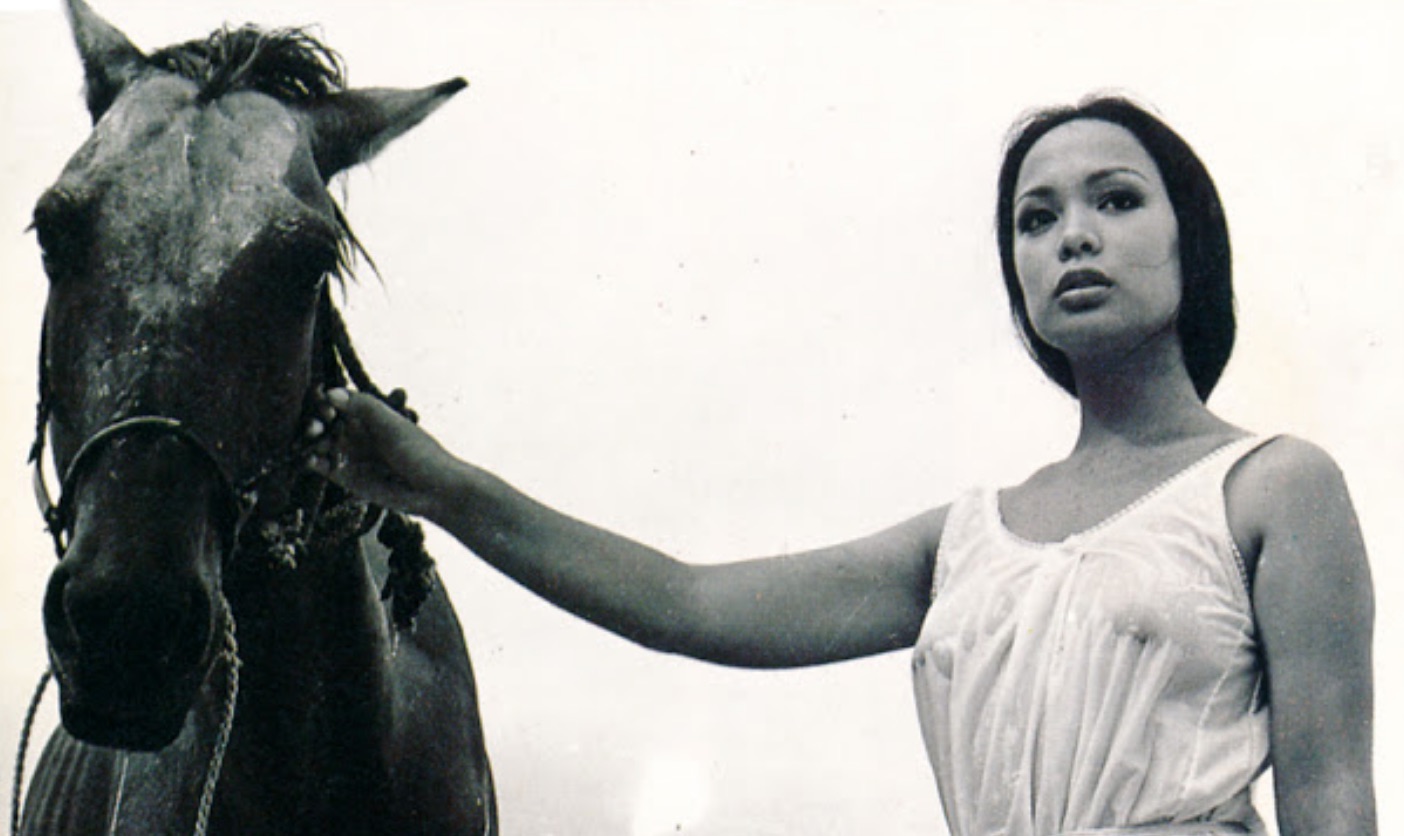 A softer, more subtle method of social subversity was required, and so the ‘wet look’ genre was born, largely featuring female stars swimming or taking a bath in their underwear, and probably being chased and ravaged in a river, sea, or under a waterfall. The most successful ‘wet look’ film was Ang Pinakamagandang Hayop sa Balat ng Lupa (The Most Beautiful Animal on the Face of the Earth, 1974) starring former Miss Universe Gloria Diaz (pictured, right).
A softer, more subtle method of social subversity was required, and so the ‘wet look’ genre was born, largely featuring female stars swimming or taking a bath in their underwear, and probably being chased and ravaged in a river, sea, or under a waterfall. The most successful ‘wet look’ film was Ang Pinakamagandang Hayop sa Balat ng Lupa (The Most Beautiful Animal on the Face of the Earth, 1974) starring former Miss Universe Gloria Diaz (pictured, right).
From this period would emerge one of the sector's most revered directors, Lino Brocka. His impact upon Asian cinema whilst his nation was in the grip of the Marcos regime remains, in hindsight, one of the great acts of defiant artistry. He is remembered for such works as Manila in the Claws of Light (1975); Insiang (1976); You Were Weighed but Found Wanting (1974); his Cannes competitor Bayan Ko: My Own Country (1984); White Slavery (1985); and, Fight for Us (1989).
 It would be in 1977, when Kidlat Tahimik won the International Critics Prize at the Berlin Film Festival with Mababangong Bangungot (Perfumed Nightmare; pictured, right), that the cinema of The Philippines re-engaged a global focus. This was the period when veteran director Celso Ad. Castillo flourished - Burlesk Queen (1977) the epic romance Pagputi ng uwak... Pag-itim ng tagak (1978); the first of his Virgin People trilogy (1984, then 1996, 2002); and, the acclaimed Paradise Inn (1985).
It would be in 1977, when Kidlat Tahimik won the International Critics Prize at the Berlin Film Festival with Mababangong Bangungot (Perfumed Nightmare; pictured, right), that the cinema of The Philippines re-engaged a global focus. This was the period when veteran director Celso Ad. Castillo flourished - Burlesk Queen (1977) the epic romance Pagputi ng uwak... Pag-itim ng tagak (1978); the first of his Virgin People trilogy (1984, then 1996, 2002); and, the acclaimed Paradise Inn (1985).
The establishment in 1981 of The Film Academy of the Philippines saw a streamlining of production and funding entities and, inspired by the socially-aware output of the 1970’s and groundswell of opposition against the Marcos government, a new generation of filmmakers were finding voice. Eddie Romero’s Palaban (1980); Gil Portes’ Iiyak ka rin (1983); Marilou Diaz-Abaya’s Karnal (1984); Mike de Leon’s Sister Stella L. (1984); Nick Deocampo’s Oliver (1983); Raymond Red’s Ang Magpakailanman (1983); and, Ishmael Bernal’s classic Hinugot sa Langit (1985) were some of the decade's best films.
But commercial interests, fuelled by the booming home entertainment market and the rise of the video pirate, began to dictate the quality of the nation’s films. By the 1990s, porn, grisly B-action (the infamous ‘chop chop’ genre) and slapstick comedy began to dominate; directors such as Toto Natividad (Hangga't may hininga, 1996) contributed groundbreaking action aesthetics, but such inventiveness was scarce. Additionally, a 30% tax on gross box-office revenues (reduced to 10% in 2009) was instituted. Despite producing around 200 films annually, factors such as the financial crisis, film piracy and cable-TV meant producers further trimmed film budgets. This was the era of ‘pito-pito’, or ‘seven-seven’ films - shoots of 14 days or less.
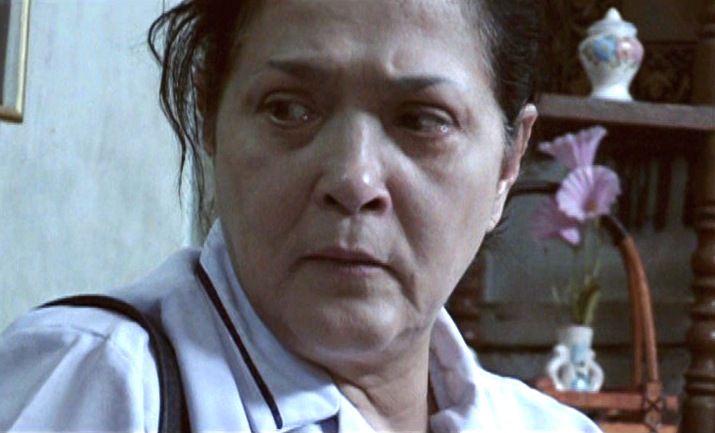 The new century saw a rebirth in Philippine cinema on the back of digital filming advancements. Films that led Philippine cinema out of its mired state and back to the forefront of Asian and international cinema included Gil Portes’ Mga Munting Tinig (2002), Maryo J. de los Reyes’ Magnifico (2003), Auraeus Solito’s Ang Pagdadalaga ni Maximo Oliveros (2005), Adolf Alix’s Donsol (2006), Jeffrey Jeturian’s Kubrador (2006; pictured, right) and Jim Libiran’s Tribu (2007). International cinema has lauded the works of Lav Diaz, who debuted as a director with 1998’s The Criminal of Barrio Concepcion, and has released such slow-cinema masterpieces as Naked Under the Moon (1999), Evolution of a Filipino Family (2004) Norte, The End of History (2013), From What is Before (2014) and The Woman Who Left (2016)
The new century saw a rebirth in Philippine cinema on the back of digital filming advancements. Films that led Philippine cinema out of its mired state and back to the forefront of Asian and international cinema included Gil Portes’ Mga Munting Tinig (2002), Maryo J. de los Reyes’ Magnifico (2003), Auraeus Solito’s Ang Pagdadalaga ni Maximo Oliveros (2005), Adolf Alix’s Donsol (2006), Jeffrey Jeturian’s Kubrador (2006; pictured, right) and Jim Libiran’s Tribu (2007). International cinema has lauded the works of Lav Diaz, who debuted as a director with 1998’s The Criminal of Barrio Concepcion, and has released such slow-cinema masterpieces as Naked Under the Moon (1999), Evolution of a Filipino Family (2004) Norte, The End of History (2013), From What is Before (2014) and The Woman Who Left (2016)
In 2008, The Philippines film industry celebrated when Brillante Mendoza’s Serbis became the first Filipino full-length film to compete in the Cannes Film Festival since internationally acclaimed director Lino Brocka's Bayan Ko: Kapit sa Patalim 16 years earlier; also in 2008, Ellen Ramos’ The Inmate became the first Filipino film to compete in competition at the Thessaloniki Film Festival.
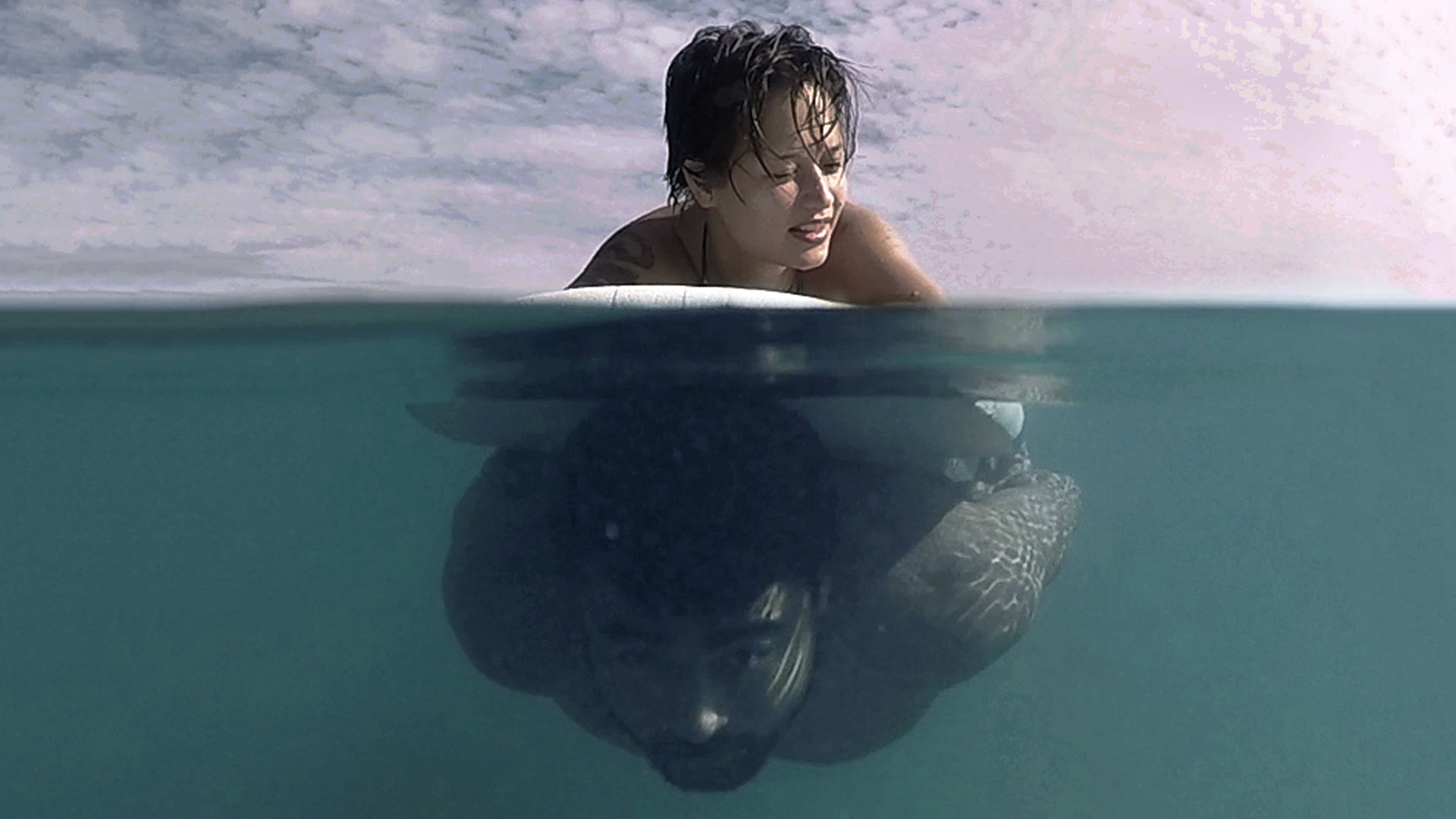 The sector continues to grow, led by such filmmaking talents as Antoinette Jadaone (Six Degrees of Separation from Lilia Cuntapay, 2011); Maribel Legarda (Melodrama negra, 2012), Erik Matti (On the Job, 2013); Christopher Ad Castillo (The Diplomat Hotel, 2013; In Darkness We Live, 2014); Mario Cornejo (Apocalypse Child, 2015, pictured, right); and, Mikhail Red (Rekorder, 2013; Birdshot, 2016). Industry institutions with progressive agendas such as the Film Academy of The Philippines, The Philippine Film Archive and the Film Development Council of The Philippines are ensuring that the century-old legacy of the film sector and the emergence of exciting new visionaries moving forward will continue to strengthen The Philippine film sector as a regional powerhouse.
The sector continues to grow, led by such filmmaking talents as Antoinette Jadaone (Six Degrees of Separation from Lilia Cuntapay, 2011); Maribel Legarda (Melodrama negra, 2012), Erik Matti (On the Job, 2013); Christopher Ad Castillo (The Diplomat Hotel, 2013; In Darkness We Live, 2014); Mario Cornejo (Apocalypse Child, 2015, pictured, right); and, Mikhail Red (Rekorder, 2013; Birdshot, 2016). Industry institutions with progressive agendas such as the Film Academy of The Philippines, The Philippine Film Archive and the Film Development Council of The Philippines are ensuring that the century-old legacy of the film sector and the emergence of exciting new visionaries moving forward will continue to strengthen The Philippine film sector as a regional powerhouse.
*All care was taken in compiling this information, collected from various sources online. We do not claim it to be a whole and complete history, so please forgive any notable omissions and do feel free to contact us with any verifiable corrections.
 History,
History,  International Cinema,
International Cinema,  The Philippines
The Philippines 
Reader Comments